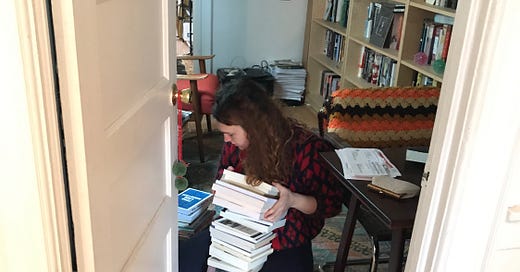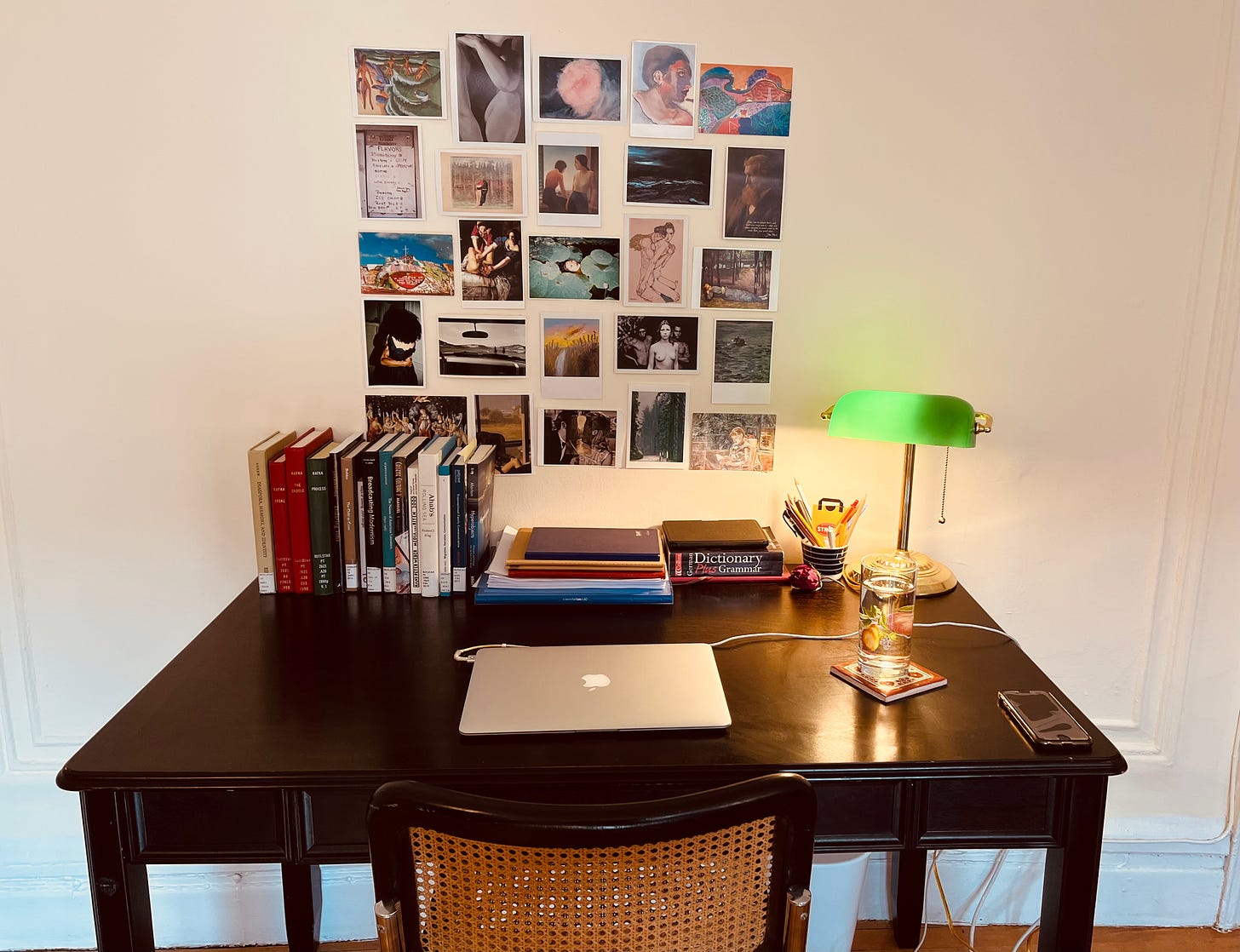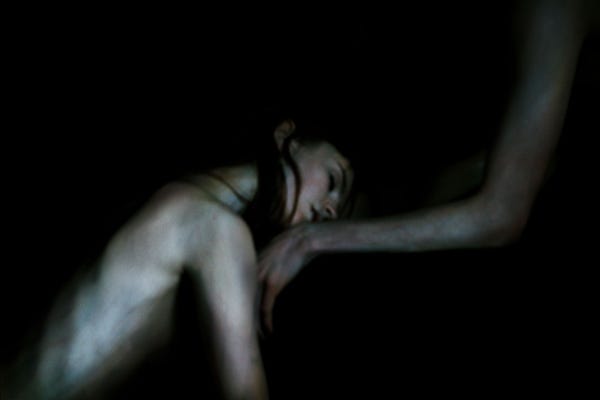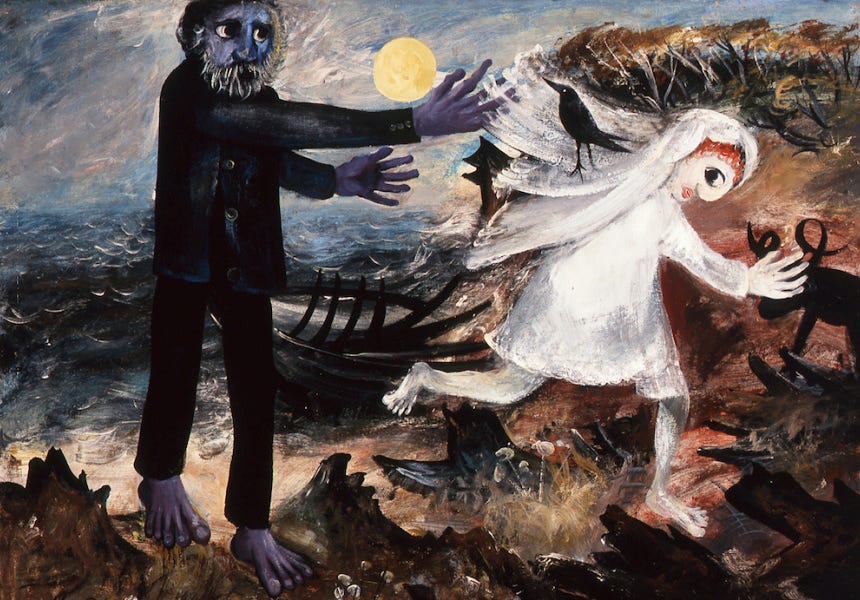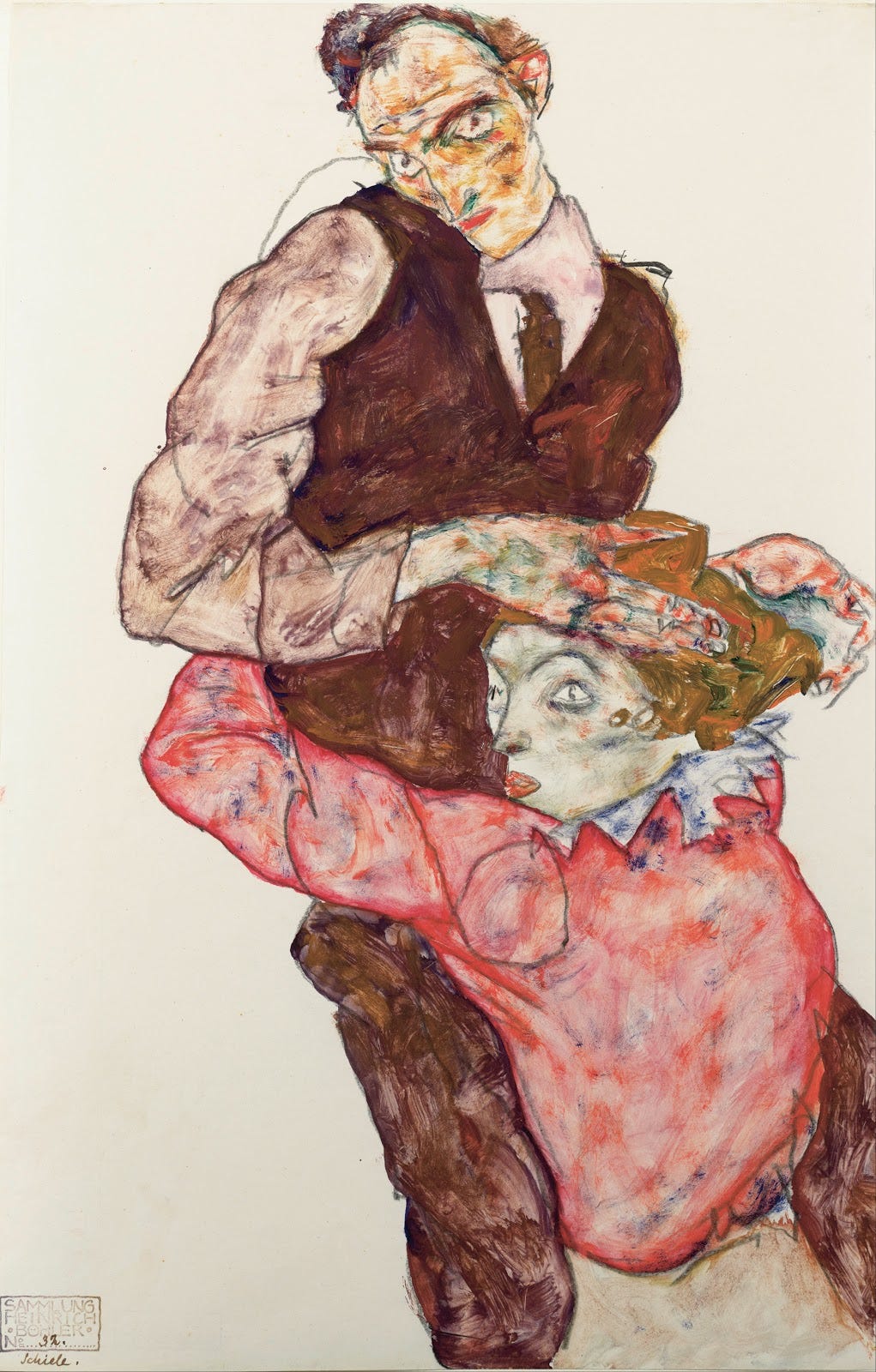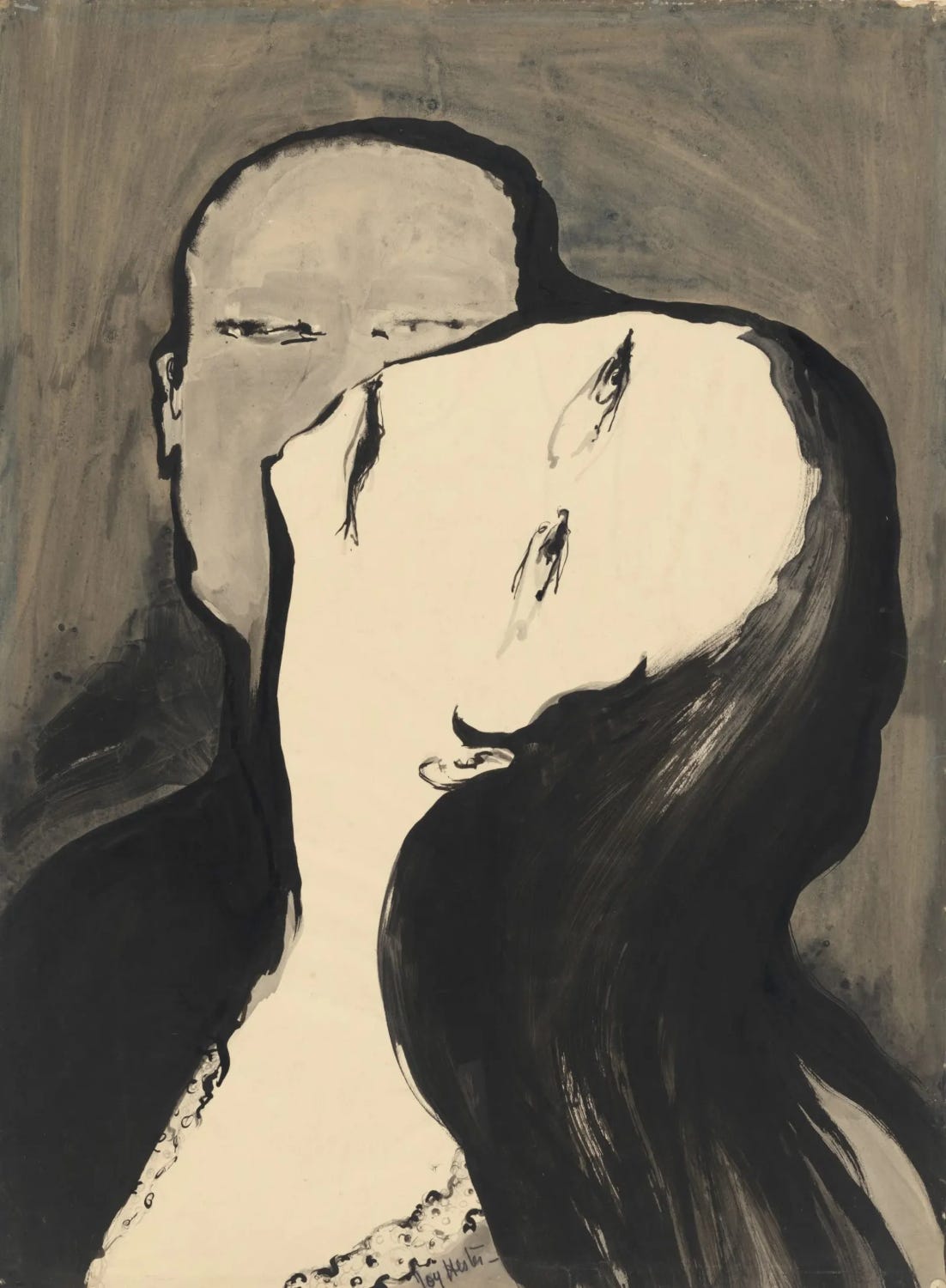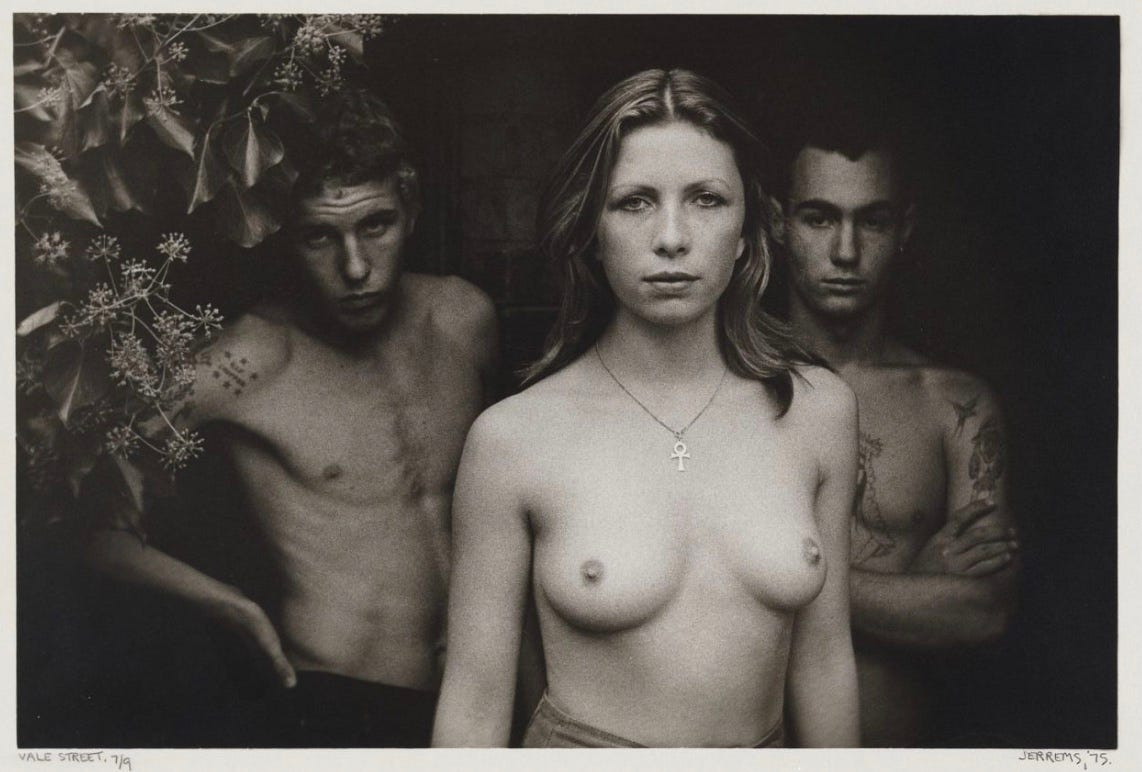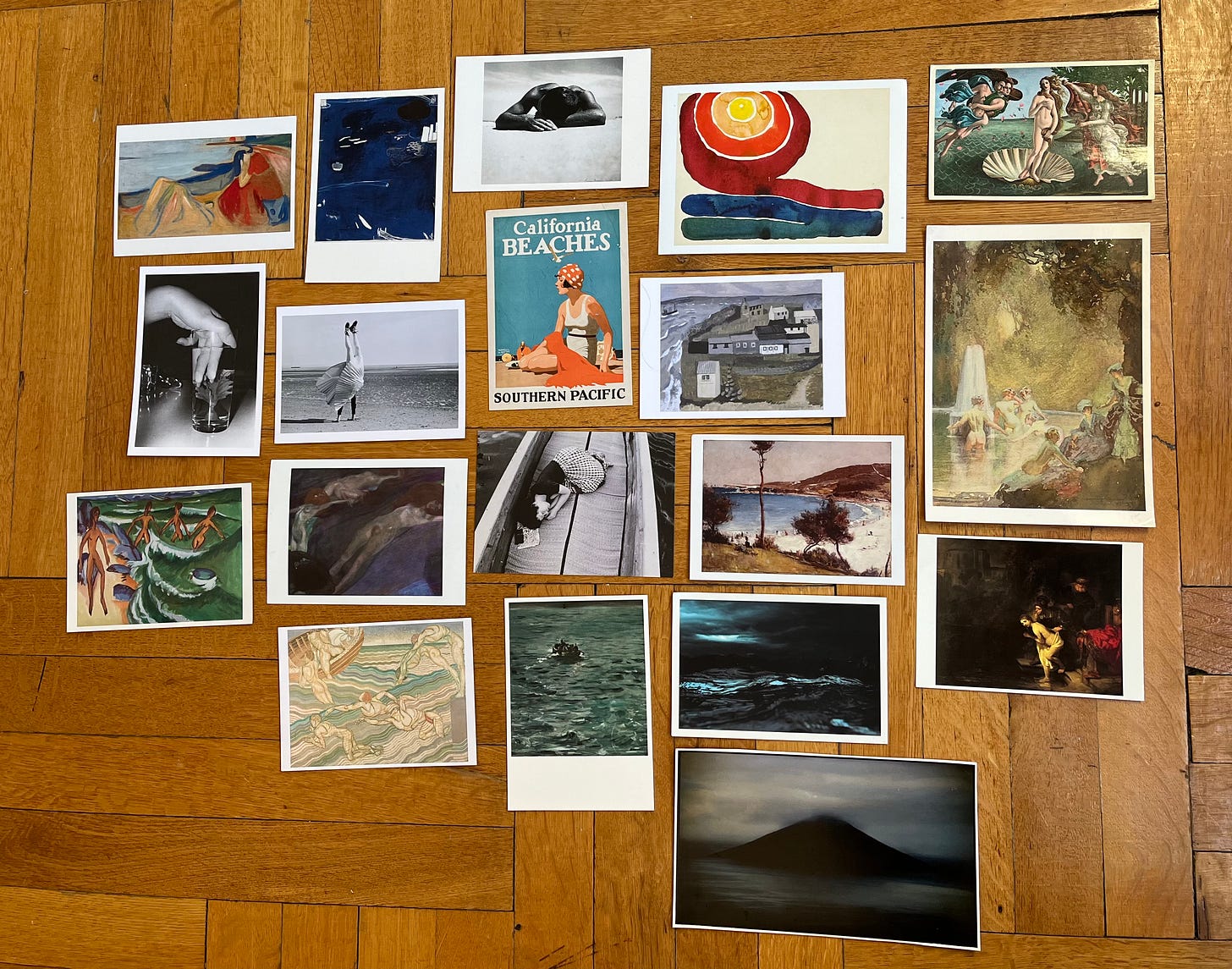Pictures on the Wall
It's an odd season, this. The weather, of course, is lovely, but writing-wise, I am in an odd in-between time. I am waiting for edits to arrive on my new book, which should arrive in the next few weeks. And after nearly six months of not writing a word while the book was sold and then bought and then I had a mind made of mush, I have just begun to start on some new things (two projects, one fiction, one non-fiction).
This afternoon I started compiling pictures for both of these books. And this practice – the picture postcard collages I’m talking about here – are, I’ve realized lately, a feature of my writing I never really talk about but which have become absolutely integral to how I make anything. Over the last decade, I have acquired an absolutely enormous number of postcard reproductions of artworks from galleries and shops and anywhere that sells them. Any time I go to a gallery I always buy at least a couple of reproductions of whatever has moved me. They are kept in a black and gold bag I got from a bodega maybe six years ago. They’re nearly all a little sticky, with remnants or tape or tack on their backs, because they’ve all at some point been on the wall. I take them with me everywhere.
The postcard collages are a kind of mood-board for whatever book I’m writing. They change through each book, and sometimes they change as I’m writing if they need to, but there’s nearly always a theme that stays the same.
Here is a photograph of me from 2018 rearranging books on the floor of the railroad room in my old Greenpoint apartment which I used to write. The collage is on the wall behind me. This would have been a few weeks after I sent my first novel to my agent, when I was still waiting to hear back from her.
And here is a picture of the desk V and I were then sharing, taken in April when my second book was out with publishers. The desk is only so neat because the photos were being taken to seduce potential subletters. (It was, I will mention, very gallant of V to let me essentially take over our shared desk by being totally okay with my pictures dominating the wall.)
What I can see now, in both of these collages, are the emotional-thematic blueprints to both of my novels.
For The Inland Sea - easiest to write about as it’s the only book that you can, as yet, read – there were images that were more key than others. They were, I guess, the ‘vibe’ I could look up at and refer back to whenever I was lost or desperate or couldn’t remember what I was writing anymore. They were also full of associations which created unexpected avenues in the writing, they helped create the subterranean thought from which writing one day emerges.
There are some pictures I think of as being quintessentially at the heart of The Inland Sea - some of which you can see in the picture from 2018 and some of which were out of frame.
This Bill Henson photograph is key, maybe the root of it all.
It’s not a particularly famous photograph by Henson, in fact I think I found it just through scrolling around the images held on the website of his gallerist RoslynOxley9 about a decade ago (it’s not on the website anymore). But there is something about the image I find absolutely shattering. The pose of the girl so vulnerable, supplicant, her skin tinged freezing-cold blue. But there is as much affection and consolation in that pose as there is something menacing and redolent of power. She’s brushing her lips against the hand/the hand is pushing her arm and insinuating itself into her face. Both figures are active, both have agency. They’re both skin and bones in a dark place.
In early 2015, on a trip back to Australia to see family, I went to Heide in suburban Melbourne with my father and siblings and saw Arthur Boyd’s ‘Brides’ series exhibited all together for the first time. The series, actually called Love, Marriage, and Death of a Half-Caste but for obvious reasons pretty much always called ‘Brides’, tells a love story about a red-headed woman and Indigenous man coming up against Australia’s incredible racism, sometimes shunned, sometimes hunted. The series remains one of the most haunting things I have ever seen, and I took photographs on my phone of nearly every single painting on view. There is something about this image, which I printed out at work using the nice paper we used to make paperback covers, which I found deeply haunting and troubling, in a way that specifically spoke to my position as a white Australian woman, and the ways in which I was reading and thinking about the place of white women in the whole vast tapestry of the violent of settler colonialism (which is better explained in this essay, an essay which is basically a companion piece to The Inland Sea).
In 2014 when the first shreds of thoughts for my first novel were percolating I bought a book called Egon Schiele’s Women and became completely transfixed by the pictures he painted of couples. I had at least three Schiele’s on the wall when I was writing The Inland Sea, but this is the one that most accurately captures the emotional claustrophobia and utter humiliation caused by desire - it’s that angle of chin against shoulder that the man has, the ambiguous blank gaze of the embracing woman.
Another insidious image of lovers - see a pattern? - this one by Joy Hester (Lovers II). Another Australian artist - the novel was saturated by homesickness for the things I missed about Australia, was a kind of collage and tribute in many ways to all the specifically Australian artists and books and films and music I felt kinship with. I have always found Hester an incredibly interesting and complicated figure, love the ghostly shapes of her figures, and the sheer presence of the woman in this picture, taking over the frame, eclipsing the other.
Frederick McCubbin’s Lost, the oldest and I guess the most iconic painting (in an Australian sense). I have intense memories of being deeply affected by McCubbin when seeing his paintings at both the NGV and the Art Gallery of NSW when I was a child. They might be the first instances that I recall being ‘moved’ or ‘transported’ by visual art. And that original sense of wonder still colours how I see McCubbin now, even when I also now see the traces of the sentimental narratives which have laid themselves over his work. Lost is the quintessential ‘lost girl’ image (again, the essay), and as such is complicated and overlaid with Australian history and storytelling. Every time I look at it I’m looking at it both as an adult, and as a six-year-old, afraid and desperately hoping to get myself lost.
This Carol Jerrems photograph (Vale Street 1975) - and Carol Jerrems in general - was huge for me. It is the only image which has consistently been on my wall all the way through the writing of both novels, and is about to be up on the wall again. Which I guess maybe says something about its centrality to whatever it is my work is about? When I was in high school I was up late-ish on a school night and stumbled on a documentary called Girl in a Mirror about Jerrems’ life (she died at only 30) and ended up in tears by the end of it. Her work has meant an enormous amount to me ever since. In the very first draft of The Inland Sea I had a whole section dedicated to Jerrems in which I reimagined the taking of this photograph. There is something about the fearlessness and power of the young woman in this image, against the two boys (sharpies, the kind of kids I heard about from my mother), boys in her thrall but possibly dangerous, emerging from the darkness of the foliage.
This, a classic Nan Goldin photograph from The Ballad of Sexual Dependency was something I discovered when I moved to New York a decade ago. There is something about the photograph which is both grimy and cinematic, elevating the gaze of the woman in bed, which I’ve always read as suspicious, as hurt, as unprotected, against this man who, in that incredible golden light, takes up so much of the frame. Even though he’s in the foreground, takes up more space, there’s something about the fact that my eyes always go back to meet hers in bed which makes this picture so sticky for me.
The same month I was poring over the book by Schiele I was also poring over a book of Francesca Woodman’s photographs. I feel weirdly shaped by Woodman’s work, as though her pictures are almost too private and close to me to be admitting to in a public space. Too difficult to write honestly about what her photographs meant and mean to me, the kind of work they’ve done inside me since I first saw them (when I was 22, which is how old she was when she died). This was another picture that I printed out at work on the good paper stock. It was, for a long time, what I thought of whenever I used the word ‘free.’
The pictures that went into Elegy, Southwest are different - the ones on the wall indelibly shaped the novel, but so did some that I never got prints of. When the book is closer to pub date I’ll write about them.
On that note, many people have asked me why the publication date for my second novel is set so far ahead in the future (early 2025). The answer has to do with my Australian publisher’s preference to release the book in the earlier part of the year closer to the big Australian literary festival dates - (next year would, as a consequence, be too soon), and the desire of all three publishers to have it come out at the same time. I am sorry it will be so long a wait, but it will, I hope, be worth it.
Meanwhile I am beginning to write new things. I am soaking beans and going for long walks and trying to be very gentle and being bad at responding to emails and texts (I am sorry, so sorry, everyone).
These are pictures of the two sets of postcard collages - for the two new projects - laid out on the floor this afternoon before I put them up on the wall. It’s the most I’ll say about either for probably a long time.
Books loved recently: The Bridge of the Golden Horn - Emine Sevgi Özdamar, The Birthday Party - Laurent Mauvignier, Yoga - Emmanuel Carrère, Time Shelter - Georgi Gospodinov, Forty-Seventeen - Frank Moorhouse, Seven Steeples - Sara Baume, Lote - Shola von Reinhold
Films loved recently: Passages (Ira Sachs), Joyce at 34 (Joyce Chopra and Claudia Weill), Godland (Hlynur Pálmason), Late August, Early September (Olivier Assayas), Hester Street (Joan Micklin Silver), Rachel, Rachel (Paul Newman)

